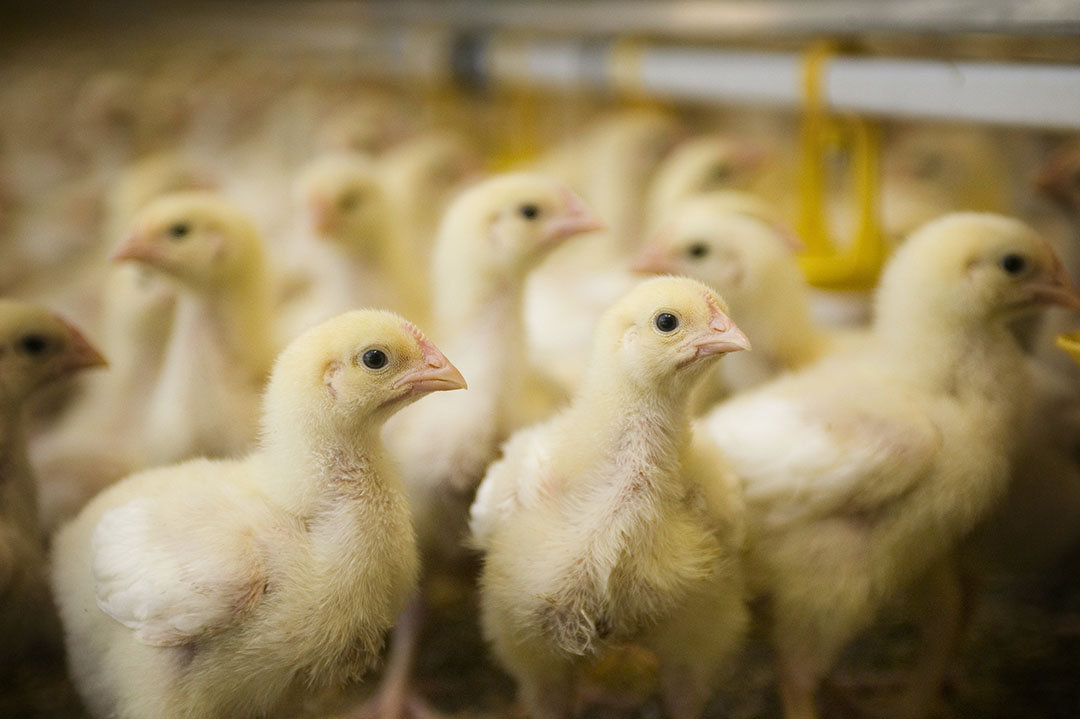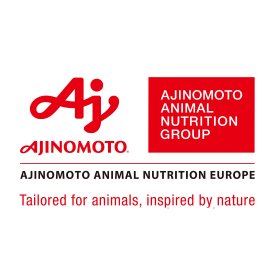Optimal amino acid supply improves sustainable broiler production

Amino acids play a major role in improving sustainability. Ajinomoto Animal Nutrition Europe developed a customised amino acid-based approach, which gives the possibility to tackle the challenge of dependency on soybean meals, the waste of nitrogen as well as foot pad dermatitis.
Increasing knowledge on amino acid requirements have supported the reduction of dietary protein in the broiler diet over the past years. It has resulted in a decrease of one percentage point of protein on average over the past 10 years without compromising performance. A new step in dietary protein reduction is nowadays driven by the challenge broiler producers have to improve the sustainability of animal production and requires the reconsideration of the way we address amino acid nutrition in diet formulation.
The context of formulation, the targeted production criteria to optimise the interactions between amino acids, and the fact that several amino acids become limiting at the same time, are examples, among others, of the need to apply an agile amino acid nutrition. The AJI-CS™ approach developed by Ajinomoto in Europe aims at taking into account the economic response to each individual amino acid, their interactions and the quantification of the economic, societal and environmental benefits.
Figure 1 – Performance response of broilers to dietary Val, Ile & Arg, based on an average of 35, 32 and 22 trials, respectively (Ajinomoto Animal Nutrition Europe internal data).

Beyond ideal amino acid profile
Broilers fed diets low in protein only exhibit good technical performance when dietary amino acids are adequately supplied. Today, nutritionists formulate an ideal amino acid profile to optimise broiler performance. Those requirements expressed as ratio to Lysine are estimated by dose-response studies, integrated into meta-analyses to take into account the variability linked to age, breed and statistical model. Figure 1 presents the response to three selected amino acids:
- Any deficiency in Valine (Val), Isoleucine (Ile) & Arginine (Arg) will result in lower technical performance,
- Response and the return on investment is different for each amino acid,
- Growth, feed intake, feed efficiency & breast deposition are impacted differently by each amino acid: Arg is a driver of feed efficiency while Ile is strongly influencing breast deposition.
In addition, interactions between amino acids must not be forgotten. Research carried out at Dr Marie-Pierre Létourneau-Montminy’s lab at Laval University has quantified the impact of dietary Leucine (Leu) on the performance response to Val. They found out that broilers fed an imbalanced diet, low in Val and high in Leu, drop in feed intake which turns into retarded growth. This is linked to the shared metabolism of the branched-chain AA: Val, Leu & Ile which is driven by the dietary Leu content. This meta-analysis can help nutritionists to manage their dietary Val depending on the raw material and nutritional context. Another important interaction to monitor is Threonine (Thr) & Glycine (Gly), Thr being the direct precursor of Gly, metabolism unique to avian species. On-going quantification of this interaction will support decision-making on Thr and Gly levels.
Health, welfare and performance
When controlling all indispensable AA, dietary crude protein can be safely reduced while maintaining growth performance, feed efficiency and cut-up yields. Usually standard practice is to substitute soybean meal with cereals (wheat or corn) and amino acid based solution AJI-CS TM, keeping dietary Lys and energy constant. In a recent broiler trial with Ross 308 male broilers, a low protein diet was fed to broilers from 0 to 26 days of age and compared to standard practice. In this example, dietary protein was reduced by 1.5% on average (21.1 to 19.3% in starter and 19.4 to 18.0% in grower diets) and inclusion of the full range of available amino acids was needed to ensure optimal supply. Consequently, soybean meal was partially replaced by wheat and feed-grade AA.
Figure 2 – Foot pad dermatitis severity in broilers fed standard and low dietary protein content (Sacranie et al., 2017).

Performance was similar in the two treatments while the number of broilers affected by foot pad dermatitis dropped by 69% at d26 and by 51% at d40, showing a continuous effect of the nutritional strategy after the experimental period (Figure 2). Foot pad dermatitis is a multifactorial issue, the result of two main factors: the litter humidity and the ammonia content of the diet. Interestingly, reducing protein is also influencing many dietary factors such as potassium content which in turn reduces water intake, oligosaccharides which influence faecal viscosity, and lower ammonia content in litter, an irritant molecule to the skin.
Improved environmental performance
Nitrogen excretion to the environment is known to be reduced by 10% for each point of dietary protein reduction due to reduced catabolism of excess amino acids. As birds drink less, litter is also usually lighter, meaning less litter to export from the farm and drier, leading to reduced volatilisation of nitrogen into ammonia, a positive outcome for; bird and worker welfare and quality of air and water. Studies performed by Dr Méda from INRA showed a reduction of 20% to 30% of ammonia emissions per point of protein reduction. A comprehensive integration of those impacts is possible thanks to the life-cycle assessment approach, measuring all the inputs and outputs of a specific broiler farm system. Dr Méda also quantified the influence of dietary protein on the broiler footprint and showed significant improvement of environmental performance of broilers fed low protein diets. When reducing nitrogen intake of the birds by 15%, climate change, eutrophication and acidification impacts are lowered by 8%, 7% and 5%, respectively.
Continuous improvement
Further reduction of soybean meal and dietary protein is going to be a challenge, including the dietary energy supply: is our current energy system robust enough for the diets of tomorrow? The characterisation of alternative feedstuffs, the modulation of fibre fractions and functions and their impacts on performance, health and welfare will also need to be further investigated. Another aspect to consider lies in the fact that amino acids are not only building blocks of muscle proteins, they also present functionalities related to intestinal integrity & immunity, metabolism & cell signalling or meat quality. Arginine for instance is the direct precursor of nitric oxide. Nitric oxide is a cytotoxic compound induced in case of a health challenge, while it can also contribute to vasodilatation, a key parameter to control the development of breast muscle myopathies. In conclusion, applying an agile amino acid decision-making process adapted to specific situations allows to efficiently implement low protein broiler diet strategies.
References available on request.
By William Lambert, Etienne Corrent, Ajinomoto Animal Nutrition Europe


